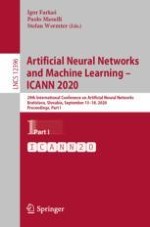2020 | OriginalPaper | Chapter
Recurrent Neural Network Learning of Performance and Intrinsic Population Dynamics from Sparse Neural Data
Authors : Alessandro Salatiello, Martin A. Giese
Published in: Artificial Neural Networks and Machine Learning – ICANN 2020
Publisher: Springer International Publishing
Activate our intelligent search to find suitable subject content or patents.
Select sections of text to find matching patents with Artificial Intelligence. powered by
Select sections of text to find additional relevant content using AI-assisted search. powered by
